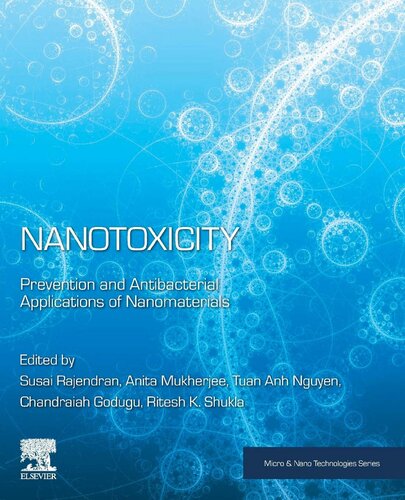

Most ebook files are in PDF format, so you can easily read them using various software such as Foxit Reader or directly on the Google Chrome browser.
Some ebook files are released by publishers in other formats such as .awz, .mobi, .epub, .fb2, etc. You may need to install specific software to read these formats on mobile/PC, such as Calibre.
Please read the tutorial at this link: https://ebookbell.com/faq
We offer FREE conversion to the popular formats you request; however, this may take some time. Therefore, right after payment, please email us, and we will try to provide the service as quickly as possible.
For some exceptional file formats or broken links (if any), please refrain from opening any disputes. Instead, email us first, and we will try to assist within a maximum of 6 hours.
EbookBell Team

5.0
20 reviewsNanotoxicity: Prevention, and Antibacterial Applications of Nanomaterials focuses on the fundamental concepts for cytotoxicity and genotoxicity of nanomaterials. It sheds more light on the underlying phenomena and fundamental mechanisms through which nanomaterials interact with organisms and physiological media. The book provides good guidance for toxic prevention methods and management in the manufacture/application/disposal. The book also discusses the potential applications of nanomaterials-based antibiotics.
The potential toxic effects of nanomaterials result not only from the type of base materials, but also from their size/ ligands/surface chemical modifications. This book discusses why different classes of nanomaterials display toxic properties, and what can be done to mitigate this toxicity. It also explores how nanomaterials are being used as antimicrobial agents, being used to purify air and water, and counteract a range of infectious diseases.
This is an important reference for materials scientists, environmental scientists and biomedical scientists, who are seeking to gain a greater understanding of how nanomaterials can be used to combat toxic agents, and how the toxicity of nanomaterials themselves can best be mitigated.